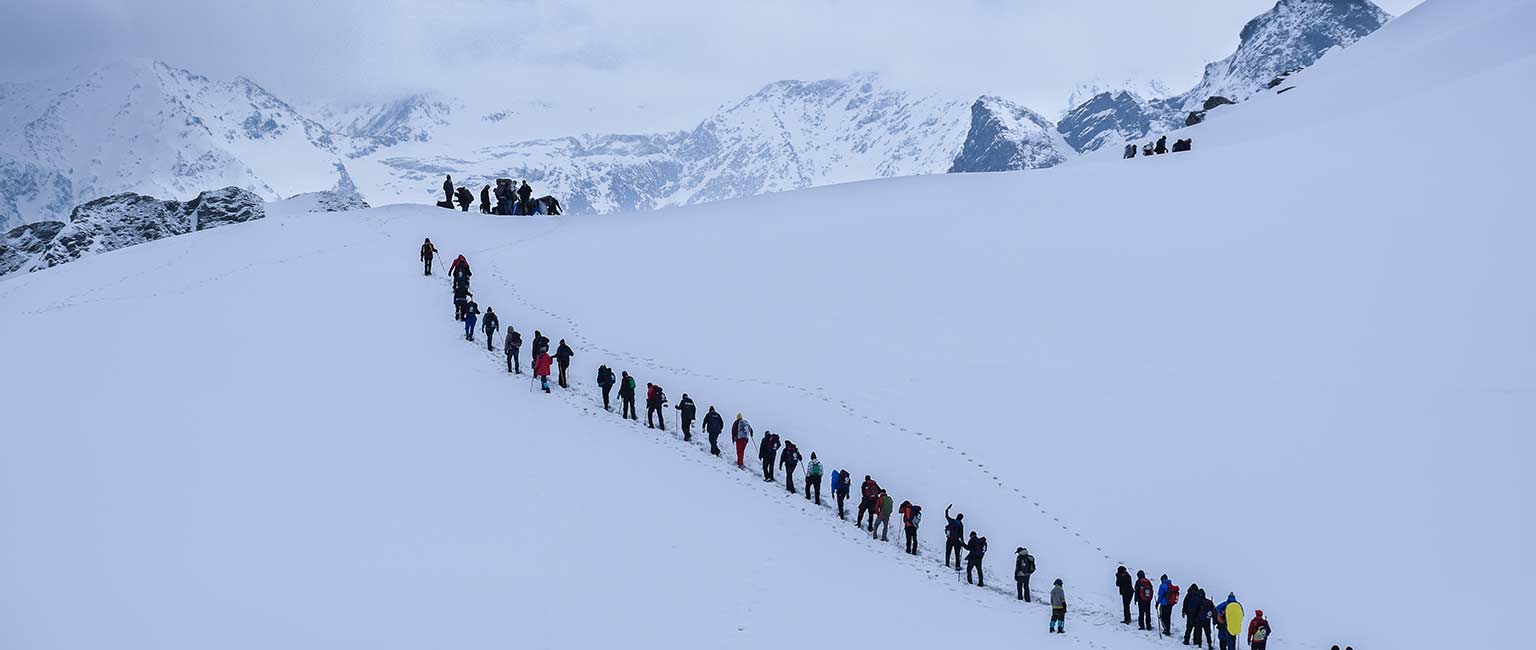Introduction
Nestled in the heart of the Indian Himalayas lies a hidden gem, the Sar Pass Trek, a trekking destination that promises adventure, natural beauty, and a spiritual connection with the mountains. Sar Pass Trek is a haven for trekkers seeking to escape the chaos of city life and immerse themselves in the serene wilderness of the Himalayas. In this blog, we will embark on a virtual journey to explore the enchanting Sar Pass Trek, covering its history, route details, experiences, and the mesmerizing landscapes it offers.
The Historical Perspective:
Before delving into the details of the trek itself, it’s crucial to understand the historical significance of Sar Pass. Sar Pass, located in the Parvati Valley of Himachal Pradesh, derives its name from the word ‘Sar,’ which means lake in the local dialect. The pass is known for its stunning frozen lake, which is the highlight of the trek.
According to local folklore, Sar Pass was once a crucial trade route between the Kullu Valley and Lahaul and Spiti Valley. Traders used this path to transport goods, especially during the winter months when other routes were blocked due to heavy snowfall. As time passed, this trade route was gradually forgotten, and Sar Pass remained hidden in the laps of the mighty Himalayas, waiting to be rediscovered by modern adventurers.
Trekking Route:
The Sar Pass Trek is a moderate to challenging trek, suitable for both beginners and experienced trekkers. The trek typically spans over 5 to 7 days, covering a distance of approximately 48 kilometers. Here is a day-wise breakdown of the trek:
Day 1: Kasol to Grahan Village
The journey begins in the picturesque town of Kasol, known for its scenic beauty and Israeli influence. The first day involves a trek to Grahan Village, which is a moderate ascent through dense forests and meadows. This is where you’ll get your first taste of the lush Himalayan flora and fauna.
Day 2: Grahan Village to Min Thach
The trail continues through thick forests, crossing several streams and picturesque meadows. You’ll witness a change in the landscape as you ascend further, with towering pine trees giving way to pristine meadows. Min Thach serves as the campsite for the night.
Day 3: Min Thach to Nagaru
This is where the real challenge begins, as you make your way to Nagaru, the base camp for Sar Pass. The terrain becomes steeper, and the air thinner as you gain altitude. The breathtaking views of snow-capped peaks make all the effort worthwhile.
Day 4: Nagaru to Biskeri Thach via Sar Pass
The highlight of the trek, day 4 takes you to the coveted Sar Pass. The pass is often covered with snow, adding to its charm. The descent from Sar Pass to Biskeri Thach is steep but exhilarating. You’ll find yourself surrounded by magnificent snow-clad peaks, a sight that will remain etched in your memory.
Day 5: Biskeri Thach to Barshaini
The trek takes you downhill to the village of Barshaini, where the journey concludes. The descent is relatively easy, and you’ll pass through quaint villages and apple orchards, providing a glimpse into the local way of life.
Experiences and Highlights:
Snowy Bliss: The Sar Pass Trek is best experienced in the months of May to June and September to October when the trail is covered in snow. Walking on pristine white expanses surrounded by towering peaks is a surreal experience.
Campfire Nights: The camping experience during this trek is magical. Gathering around a campfire, sharing stories, and gazing at the starlit sky in the middle of the Himalayas is an unforgettable memory.
Local Culture: Interacting with the local Himachali people, who are warm and hospitable, offers a unique cultural experience. You can taste local cuisine and learn about their traditions.
Flora and Fauna: The trek provides a chance to witness a diverse range of flora and fauna, including deodar and pine forests, rhododendrons, and various species of birds. Keep an eye out for the elusive Himalayan wildlife like Himalayan Monal, musk deer, and ibex.
Spiritual Connection: The tranquility and isolation of the trek route offer a spiritual connection with nature. It’s a time for self-reflection, meditation, and finding inner peace amidst the grandeur of the mountains.
Preparation and Tips:
Before embarking on the Sar Pass Trek, it’s essential to be well-prepared:
Fitness: Ensure that you are physically fit and engage in regular cardio and strength training exercises to prepare your body for the trek.
Acclimatization: Spend a day or two in Kasol to acclimatize to the high altitude before starting the trek.
Packing: Pack warm clothing, trekking gear, a good quality sleeping bag, and other essentials like a first-aid kit, water purifiers, and energy snacks.
Guides and Permits: Hiring a local guide is advisable, as they are familiar with the terrain and can provide invaluable assistance. Ensure you have all the necessary permits before starting the trek.
Responsible Trekking: Follow Leave No Trace principles, which include not littering, respecting local customs, and preserving the natural beauty of the region.
Conclusion:
The Sar Pass Trek is a journey of self-discovery, adventure, and natural beauty. It takes you through some of the most breathtaking landscapes in the Himalayas and offers an opportunity to connect with the mountains in a profound way. Whether you are a seasoned trekker or a novice, this hidden gem in Himachal Pradesh should undoubtedly be on your trekking bucket list. So, pack your bags, lace up your hiking boots, and get ready to explore the enchanting Sar Pass Trek, where every step is a step closer to the heart of the Himalayas.

